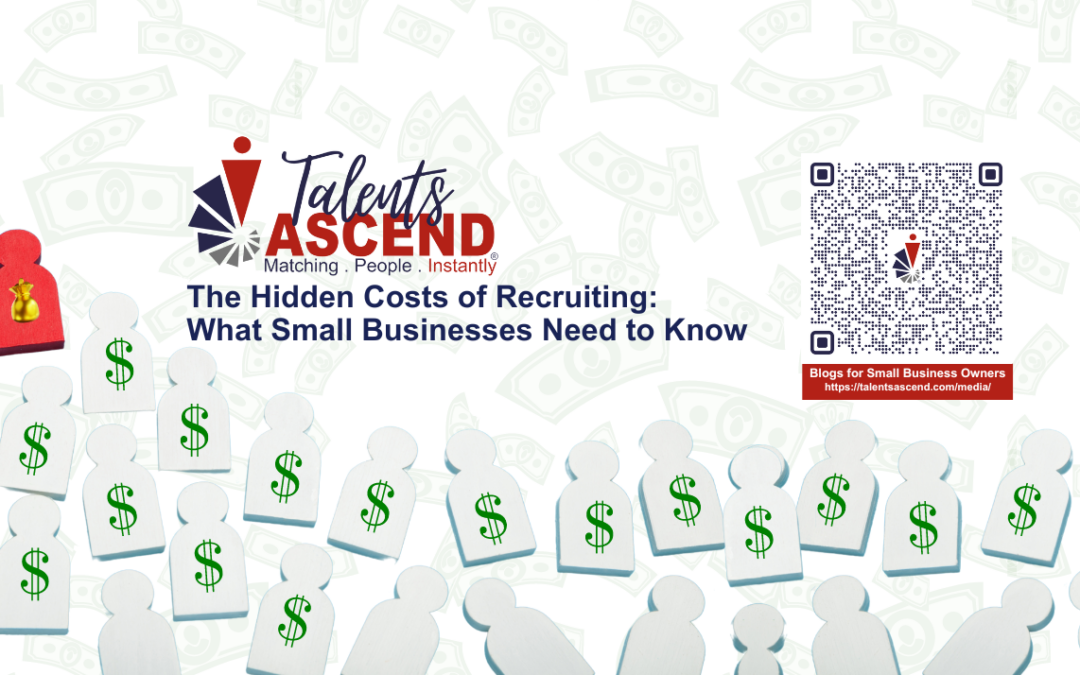Hiring the right employees can be one of the most challenging and costly aspects of running a business. While it’s easy to think of recruitment as simply reviewing resumes and scheduling interviews, the real cost of recruiting goes far beyond these steps. For small businesses, the expense of finding, vetting, and securing talent can quickly add up, impacting the bottom line in unexpected ways.
Time is Money: The Hidden Labor Hours
Recruiting can be a time-consuming process. For every hour spent reviewing resumes, posting jobs, or interviewing candidates, there’s another task being neglected. When small business owners or their team members take on recruiting themselves, they may spend hours each week on these tasks. This is time that could be better spent on business development, client management, or strategic growth. These labor hours come at a cost—both in terms of lost productivity and missed revenue opportunities.
The Price of Advertising and Job Postings
Posting job ads on popular platforms is often seen as a necessary expense, but these costs add up quickly. While free job boards exist, the most effective platforms for reaching qualified candidates often come with significant fees. If a position remains unfilled for an extended period, the cumulative cost of reposting ads can be overwhelming, particularly for small businesses with tight budgets.
Hiring the Wrong Person Can Be Costly
One of the highest costs in recruiting is the risk of making a bad hire. When a new hire doesn’t work out, businesses lose the money spent on onboarding and training, and they may have to start the recruiting process all over again. A mis-hire can also impact team morale and productivity. The longer a position remains vacant or filled by the wrong person, the higher the cost to the business.
The Long-Term Costs of Turnover
High turnover rates can become a major financial burden. For every employee that leaves, the company must restart the recruitment process. This not only means more job ads and interviews but also additional onboarding and training costs. High turnover can also signal instability, making it harder to attract top talent in the future.
Opportunity Cost: What You Could Be Doing Instead
For many small business owners, the opportunity cost of recruiting is often overlooked. While the immediate expenses—job postings, time spent sourcing candidates—are easy to track, it’s harder to quantify the cost of missed opportunities. Time spent recruiting could be spent on tasks that directly contribute to the business’s growth, such as building client relationships, improving products or services, or developing new revenue streams.
The Solution: Outsourcing Recruitment
To avoid these escalating costs, many small businesses are turning to outsourcing options or partnering with recruitment services that specialize in skills-based hiring. This can significantly reduce the time and money spent on sourcing, vetting, and onboarding employees. Skills-based hiring platforms, like Talents ASCEND, remove bias from the recruitment process and streamline hiring by matching candidates to roles based on their abilities—not their resumes.
By understanding and addressing these hidden costs, small business owners can make smarter, more informed decisions about how to manage their recruiting efforts. The investment in a more efficient, skills-based recruiting process may pay off far more than continuing with traditional, expensive methods.
Talents ASCEND® offers a flat fee membership with unlimited career profiles, unlimited candidates, a fractional recruiter, and no hidden fees. Want to learn how much recruiting is really costing you? You can use our Cost of Recruiting Calculator at https://talentsascend.com/calculator/ to find out.

